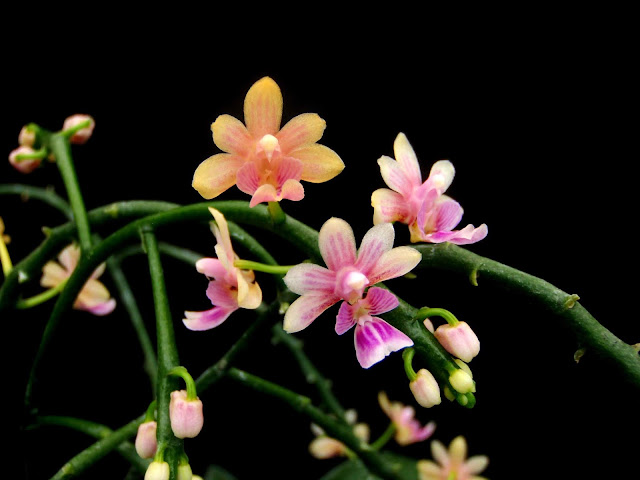Geodorum densiflorum along a mountain trail

While walking along a mountain trail yesterday, I chanced upon a small population of the terrestrial orchid Geodorum densiflorum , a species widespread in China, Indochina, Taiwan, the Ryukyu Islands, to Malaysia and Indonesia. It is certainly one of the most common orchids in the Philippines and is found in a variety of habitats including limestone forests and beach forests, even near human habitation. In my place, some plants are found on the roadsides. This is a self-pollinating species, which means that it does not need a pollinator to produce viable seeds. If you will notice, the green ovaries are already expanding behind those pink flowers. And because it is apt to have so many seed pods, the chances are high that the species is able to spread far and wide. Geodorum densiflorum Geodorum densiflorum have plicate leaves rising from a rounded underground corm which is said to yield a sticky substance that can be used as a mucilage. The inflorescences are bent like an u...



